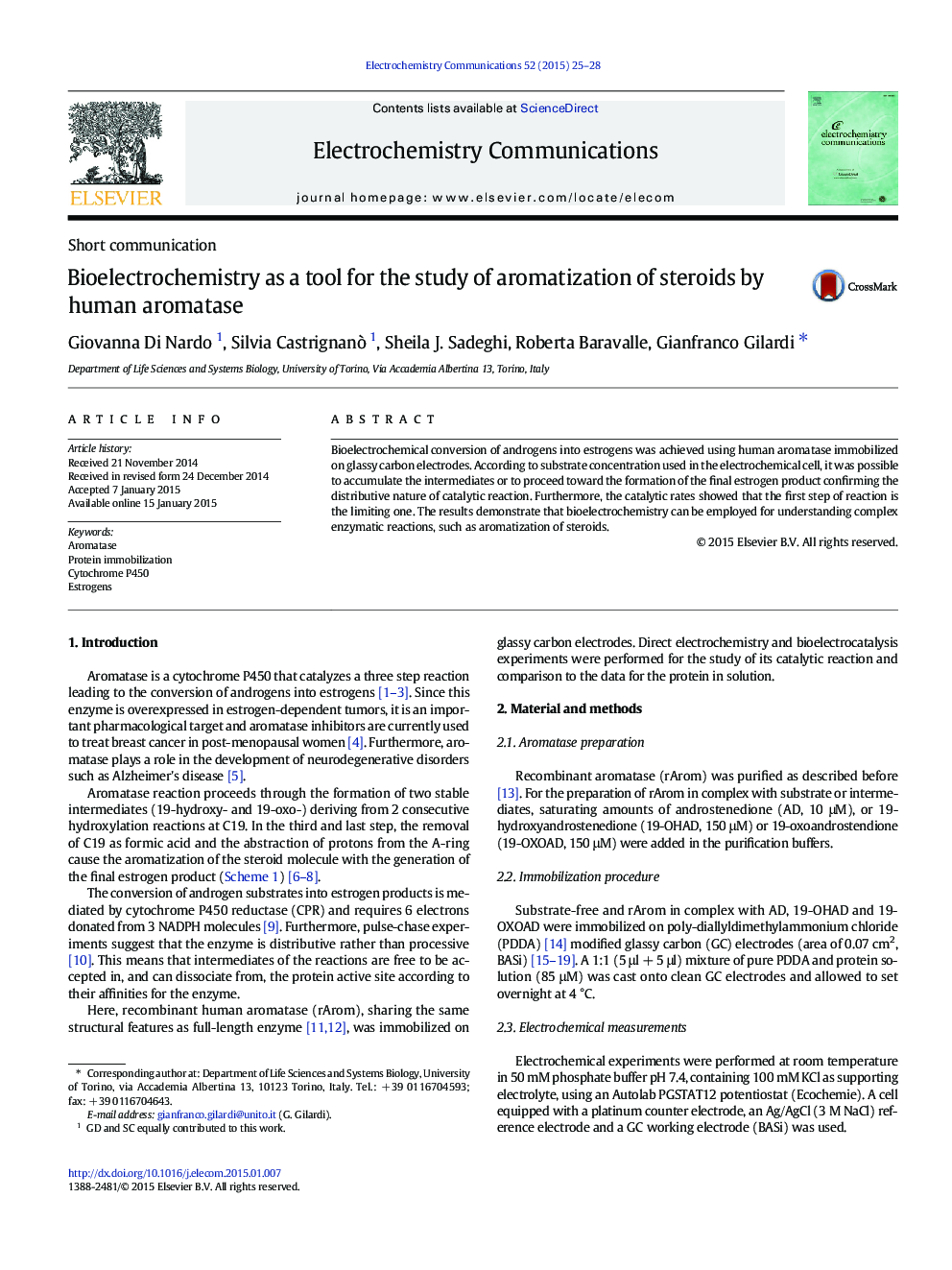| Article ID | Journal | Published Year | Pages | File Type |
|---|---|---|---|---|
| 178921 | Electrochemistry Communications | 2015 | 4 Pages |
•Immobilization of human aromatase on modified glassy carbon electrodes•Bioelectrochemical aromatization of androgens into estrogens by human aromatase•Distributive nature of a three step catalytic reaction•Bioelectrochemical establishment of the limiting catalytic step•Measurement of the product amount for the different catalytic steps
Bioelectrochemical conversion of androgens into estrogens was achieved using human aromatase immobilized on glassy carbon electrodes. According to substrate concentration used in the electrochemical cell, it was possible to accumulate the intermediates or to proceed toward the formation of the final estrogen product confirming the distributive nature of catalytic reaction. Furthermore, the catalytic rates showed that the first step of reaction is the limiting one. The results demonstrate that bioelectrochemistry can be employed for understanding complex enzymatic reactions, such as aromatization of steroids.
Graphical abstractFigure optionsDownload full-size imageDownload as PowerPoint slide
